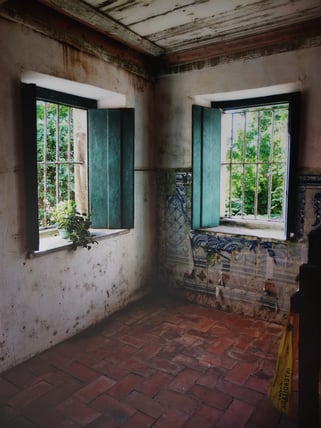If you’re a first-time investor embarking on a fix-flip option, the whole process may seem fairly self-explanatory; buy low, sell high, make it look good, and turn a profit. However, the fix-fip process is filled with a long list of important factors you don’t want to ignore. In this article, we’ve listed five of the most common, most important mistakes to avoid with a fix-flip so you can be sure to get the best return on your investment.
Forgetting About Permits
Quite often, flipping a home means more than just cosmetic fixes. Underlying problems are often found - things like wiring, plumbing, and maybe even the foundation needing repairs - and these aspects often require permits and regulation by the local authorities. If something seems fine, but ends up causing problems in the future, you could potentially be in legal trouble with the home’s buyer, the neighbors, or even your lender. While waiting on permits may be an added expense, and creates a longer timeline, the importance of them is not to be taken lightly. If you try to cut corners with permits, it could cost you far more in the long run.
Not Knowing the Neighborhood/Market
Buying the worst house on the best block is one of the oldest tricks in the book with home flipping, but it’s a little more complicated than that. This may seem like a no brainer, but the state of the real estate market is the single most important thing to really be knowledgeable about before embarking on a fix flip. Simply having the shiniest new house on the block isn’t going to cut it. And if you’re an investor unfamiliar with the area or even the city’s housing trends, forging relationships and seeking advice from local realtors who are familiar with it, is a very wise thing to do. Arming yourself with as much knowledge as possible in these areas is the key to making a smart investment.
Poor Time Management
When you buy a house to flip for profit, for a time, you’re paying a mortgage on a house that isn’t intended to be yours in the long run. This is enough to make you want to finish the flip as quickly as possible. And while flipping a home efficiently is key to making a profit, rushing through it can certainly have adverse effects. Potential buyers can see shoddy workmanship and rush jobs more keenly than you realize. In fact, if they’re local to the area and know that the house was recently flipped, they’ll be looking even more closely for mistakes. So, ironically, rushing to finish so you can get more of a return may actually end up hurting your profit potential. Therefore, striking the balance and achieving an efficient flip, rather than too fast a flip, should always be at the forefront of your mind as an investor.
Neglecting the 70% Rule
A tried and true rule of thumb with house flipping is the 70% rule. Essentially, this means that an investor should never pay more than 70% of the home’s ARV, or ‘after repair value’, minus the renovations. For example, if a home is estimated to be worth $300,000 after repairs and the repairs are expected to cost $75,000, then you should not pay more than $135,000 for this home. And just as you shouldn’t pay too much for a fix-flip home, you also shouldn’t be unrealistic about the return on investment. Home flipping takes patience and know-how. It is not a get-rich-quick plan.
Waiving the Home Inspection
Perhaps one of the most egregious mistakes a first time fix-flip investor can make is to forego a home inspection prior to purchase in an effort to pinch pennies. According to Steve Cederquist of Cornerstone Property Services, “I can’t tell you the number of times people lose everything because they don’t do the safest thing: getting a home inspection.” Home inspections can reveal very costly underlying issues that may make you rethink that particular property entirely. It’s not only a small price to pay for peace of mind, but a crucial step in finding out if you’re about to invest your money wisely at all. And, if it turns out the problems the home inspector finds are manageable enough, this can be used as a way to negotiate and get a lower price for the property. Bottom line - there’s no reason not to hire a home inspector!
In order to maximize the return on your investment, you must avoid these mistakes with a fix-flip, as well as consider what buyers are looking for in the local market. Understanding and knowledge make this process easier, more palatable and more profitable.

Recent Posts
- Spec Home Loans: Complete Guide to Construction Financing for Builders
- Spec Construction Loans: A Spec Line of Credit Is Worth the Paperwork
- Spec Homes and Pre-Sale Homes: Relative Benefits for a Spec Builder
- Spec Construction Success: Insights for the Investor Builder
- How Is a Spec House Different From Other Kinds of House Construction?
